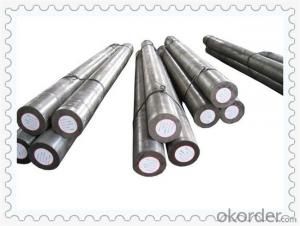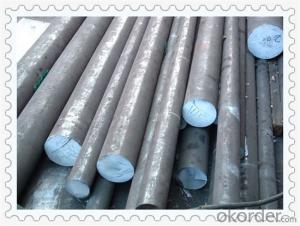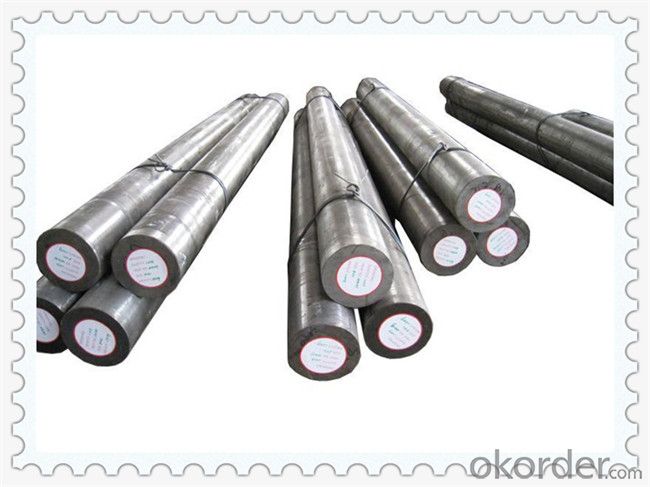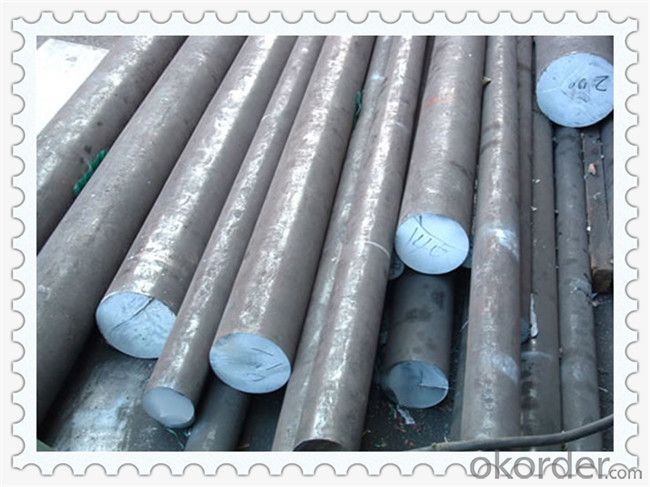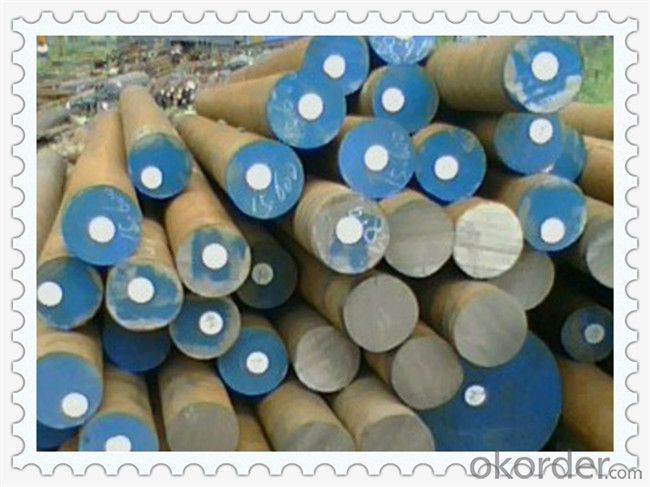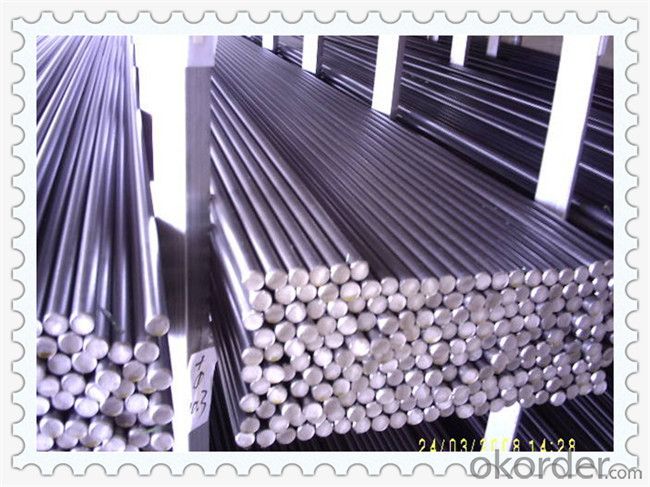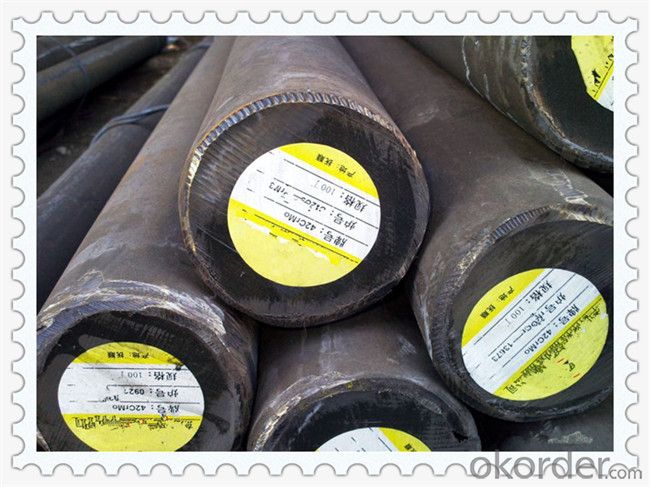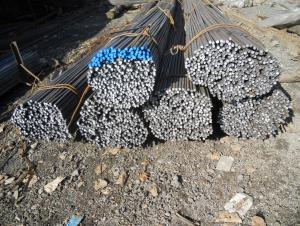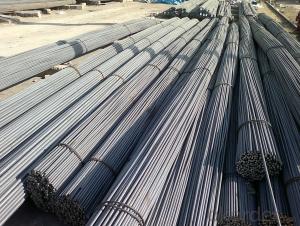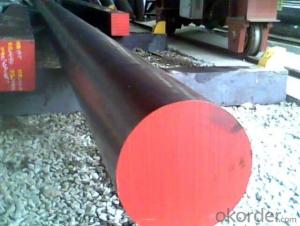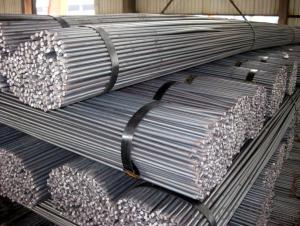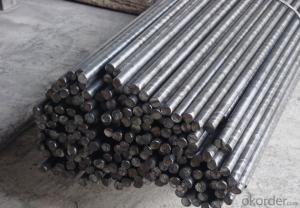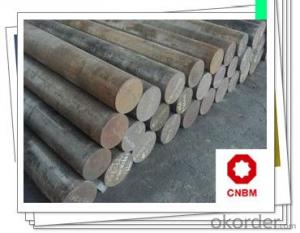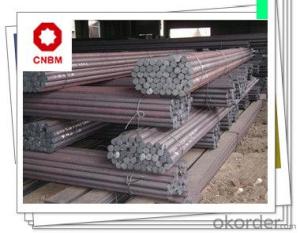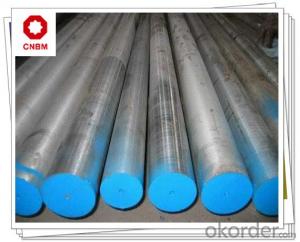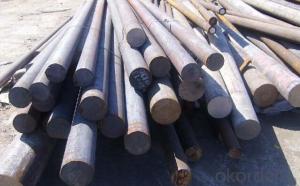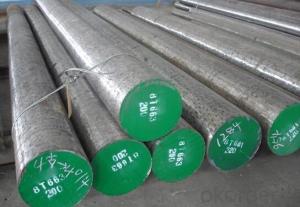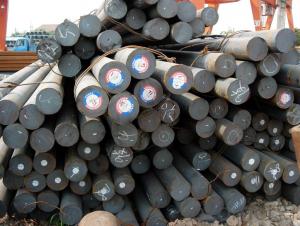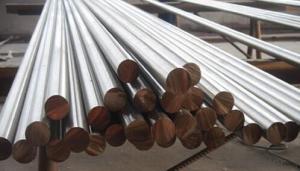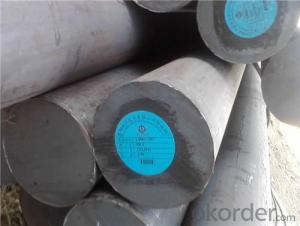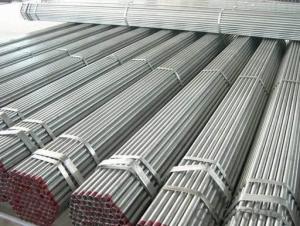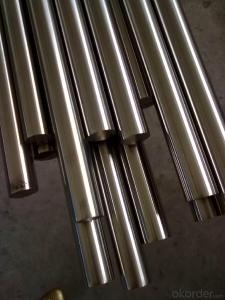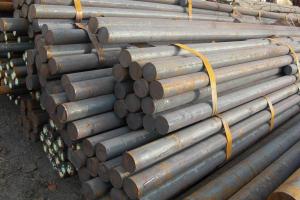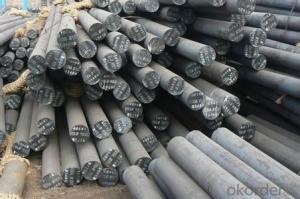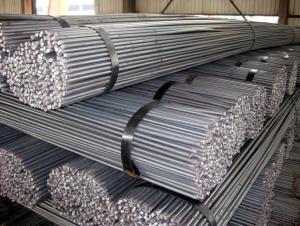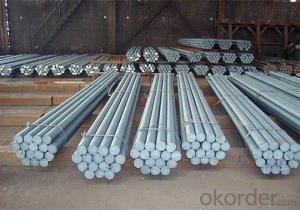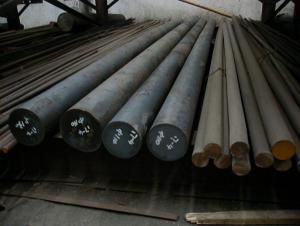35CrMo AISI 4135 Forged Round Bars 34CrMo4
- Loading Port:
- China main port
- Payment Terms:
- TT OR LC
- Min Order Qty:
- 30 m.t.
- Supply Capability:
- 10000 m.t./month
OKorder Service Pledge
OKorder Financial Service
You Might Also Like
35CrMo AISI 4135 Forged Round Bars 34CrMo4
Products Details
1. Process: EAF+LF+VD+ Hot forged
2. Certificate: CCS, ABS,GL, RS,BV,ISO9001
3. Delivery time: 30 days
4. MOQ: 20 Tons
Chemical Compasition (%)
| Grade | C | Si | Mn | Cr | Mo |
| 35CrMo | 0.32/0.40 | 0.17/0.37 | 0.40/0.70 | 0.80/1.10 | 0.15/0.25 |
Production Specification
Material | Hot forged steel round bar
|
Diameter | 80mm-1200mm
|
Length | steel round bar:2000mm-12000mm Straightness: 3mm/M max; square bar:100-1000mm, blocks sizes up to 800*1000mm
|
Process | EAF + LF + VD +(ESR) + Forged + Heat Treatment (optional)
|
Delivery condition | Hot forged +Rough machined (black surface after Q/T)+ Turned (optional) |
Delivery Time | 30 days
|
MOQ | 20 tons
|
Heat treatment | Normalized / Annealed / Quenched / tempered |
Forged ratio | no less than 3:1
|
Technical Data | According to the customer's requirement of Chemical Composition, Physical Properties and Mechanical Testing; SCM440 steel round bar available for test |
Test | Ultrasonic test according to SEP 1921-84 G3 C/c
|
Certificate of Quality | issued in English, in addition the normal terms, production process, the mechanical property (yield strength, tensile strength, elongation and hardness), forged ratio, UT test result, Grain size, heat treatment methods and the sample of is shown on the Certificate of Quality
|
Marking | Grade, heat NO. length will be stamped one each bar with required color
|
Payment | 30% advance by T\T, balance pay before shipment Irrevocable LC at sight
|
Application | Statically and dynamically stressed components for vehicles, engines and machines. For parts of larger cross-sections, crankshafts, gears.
|
Products Show
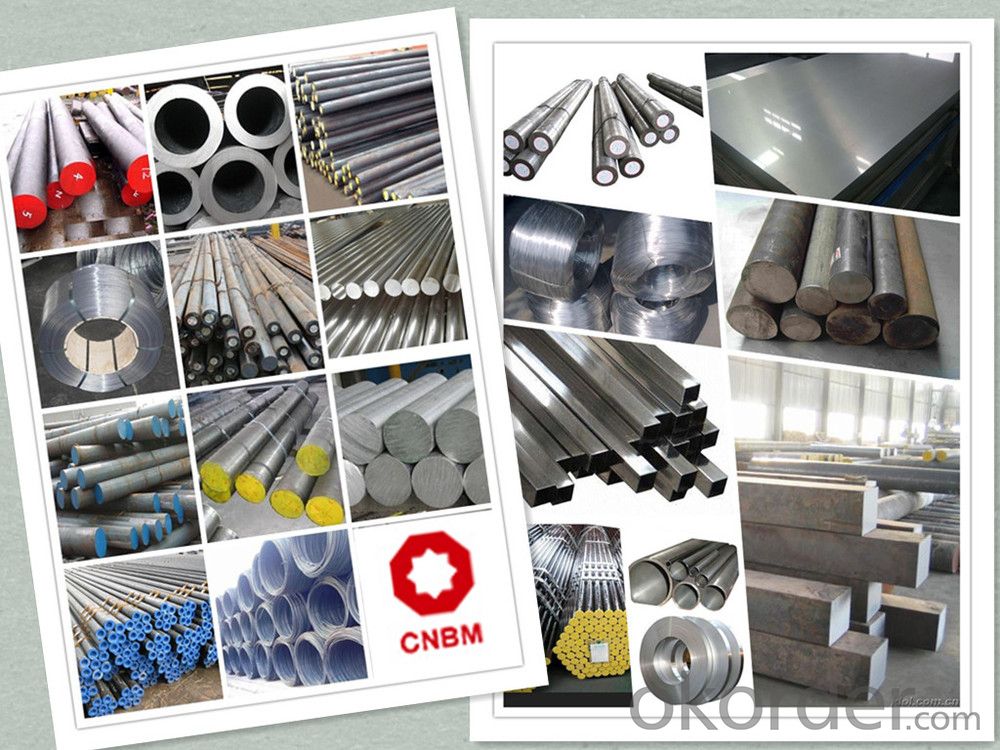
Product Overviews
| Product Name | Typical Grades | Diameter(mm) | Standard adopted |
| Carbon Steel | 20 (1020/S20C/C22) | Ø16-Ø300 |
GB/SAE/JIS/DIN
|
| 40 (1040/S40C/C40) | |||
| 45 (1045/S45C/C45) | |||
| Bearing Steel | GCr9 (51100/SUJ1) | Ø12-Ø250 | |
| GCr15 (52100/SUJ2/100Gr6) | |||
| GCr9SiMn (A485-Gr.1/SUJ3) | |||
Cr-Mo Steel | 20Cr (5120/SCr420H/20Cr4) | Ø12-Ø250 | |
| 40Cr (5140/SCr440/41Cr4) | |||
| 42CrMo(4140/SCM440/42CrMo4) | |||
| Gear Steel | 20CrNiMo | Ø16-Ø600 | |
| 20CrMn(5115/SMnC420/20MnCr5) | |||
| 20CrNiMo(8620/SNCM220/20CrMiMo2) |
Application
| Carbon Steel | Mold bottom, Plastic mold, Construction machinery parts Automobile parts, Security grills, Screens, Construction |
| Bearing Steel | Aerospace, Navigation, Nuclear energy, Chemical industry Electronic information, Petrochemical, Instrument and meter Transportation |
| Cr-Mo Steel | Mechanism & Fasteners gear, Stressed components for vehicles Engines and machines, Parts of larger cross-section |
| Gear Steel | All kinds of gears, Statically and dynamically stressed component for vehicles Engines and machine, Larger cross-section parts, Crankshafts |
Work Shop
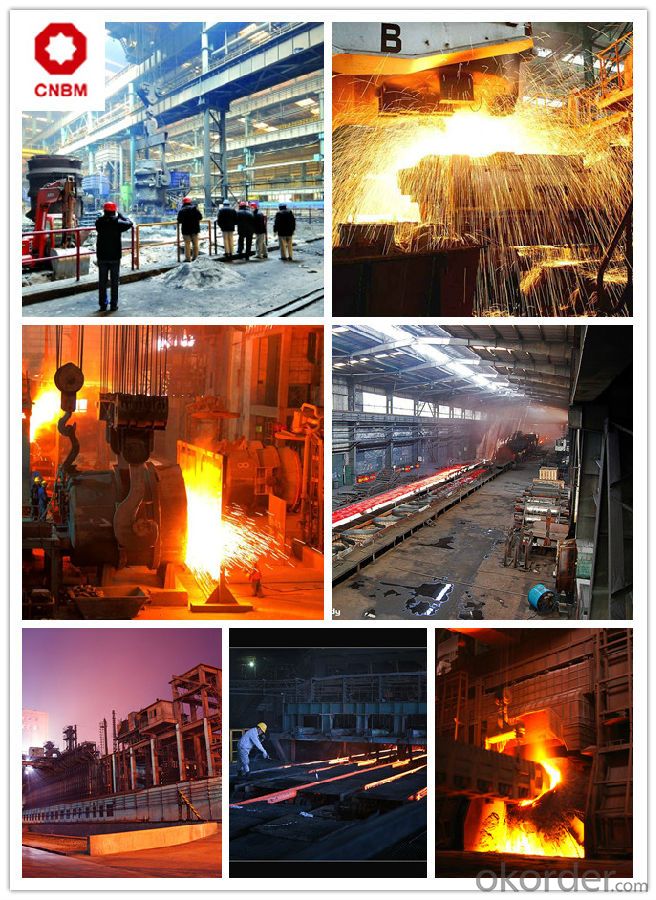
Company Information
CNBM International Corporation is the most important trading platform of CNBM group.
Whith its advantages, CNBM International are mainly concentrate on Cement, Glass, Iron and Steel, Ceramics industries and devotes herself for supplying high qulity series of refractories as well as technical consultancies and logistics solutions.

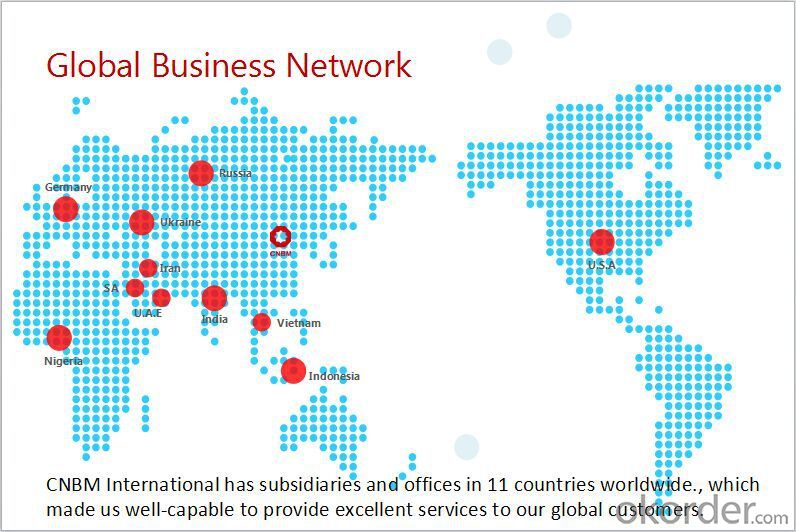
FAQ
1, Your advantages?
professional products inquiry, products knowledge train (for agents), smooth goods delivery, excellent customer solution proposale
2, Test & Certificate?
SGS test is available, customer inspection before shipping is welcome, third party inspection is no problem
3, Factory or Trading Company?
CNBM is a trading company but we have so many protocol factories and CNBM works as a trading department of these factories. Also CNBM is the holding company of many factories.
4, Payment Terms?
30% TT as deposit and 70% before delivery.
Irrevocable L/C at sight.
5, Trading Terms?
EXW, FOB, CIF, FFR, CNF
6, After-sale Service?
CNBM provides the services and support you need for every step of our cooperation. We're the business partner you can trust.
For any problem, please kindly contact us at any your convenient time.
We'll reply you in our first priority within 24 hours.
Packaging & Delivery
1, Packaging: seaworthy package or as required
2, Delivery: 35-45 days or based on quantity
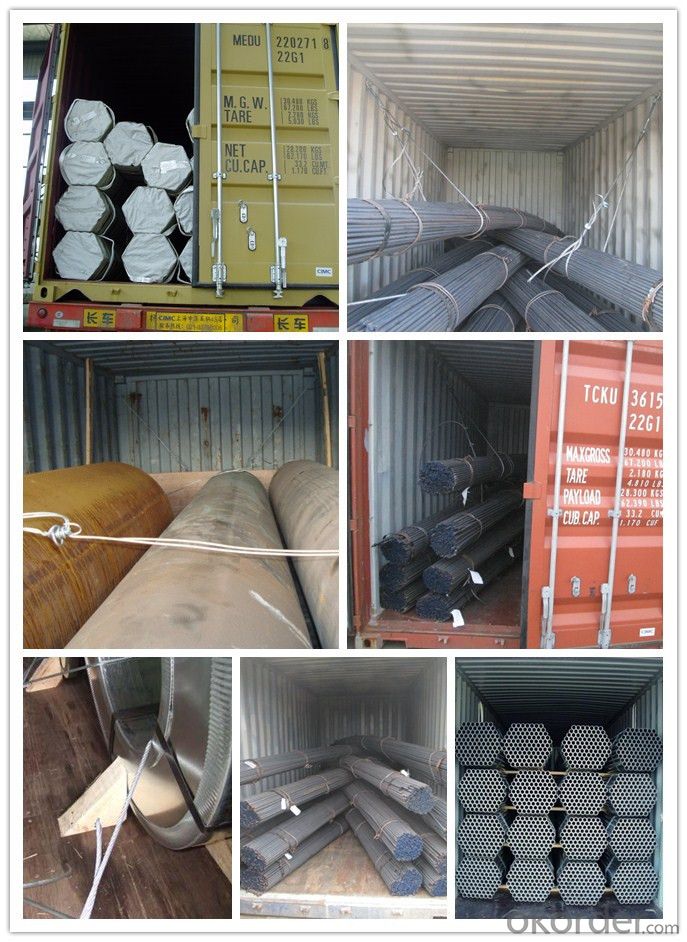
- Q: What are the advantages of using bearing steel round bars?
- There are several advantages of using bearing steel round bars. Firstly, bearing steel has high hardness and wear resistance, which ensures durability and longevity of the bearings. Secondly, bearing steel has excellent dimensional stability and can withstand high temperatures, making it suitable for applications with heavy loads and high-speed rotations. Additionally, bearing steel round bars have excellent surface finish and low friction coefficient, resulting in smooth and efficient operation. Lastly, bearing steel has good corrosion resistance, reducing the risk of rust and prolonging the lifespan of the bearings.
- Q: What are the different joining methods for steel round bars?
- There are several different joining methods that can be used for steel round bars, depending on the specific application and desired outcome. Some of the most common joining methods for steel round bars include welding, brazing, and mechanical joining. 1. Welding: Welding is a popular method for joining steel round bars. It involves melting the edges of the bars and fusing them together using heat. Various welding techniques such as arc welding, MIG welding, TIG welding, and spot welding can be used, depending on the thickness and type of steel being joined. Welding provides a strong and permanent bond, making it suitable for heavy-duty applications. 2. Brazing: Brazing is another method used to join steel round bars. It involves heating the bars and melting a filler metal that has a lower melting point than the steel. The molten filler metal is then drawn into the joint by capillary action, creating a strong bond when it solidifies. Brazing is often used when the base metals have different melting points or when a lower-temperature joining process is required. 3. Mechanical joining: Mechanical joining methods do not involve any heat or melting of the steel round bars. Instead, they rely on mechanical means to hold the bars together. Examples of mechanical joining methods include bolted connections, riveting, and clamping. These methods are often used when disassembly or adjustability is required, as they provide a non-permanent joint that can be easily undone. It is important to consider factors such as the strength requirements, environmental conditions, and the specific application when choosing a joining method for steel round bars. Each method has its own advantages and limitations, and the appropriate joining method should be selected to ensure a secure and durable bond between the round bars.
- Q: Special steel bar steel products used to do what
- Carbon tool steel is high carbon steel basically contains alloy elements, the carbon content in the range of 0.65% ~ 1.35%, the production of low cost, easy to obtain raw materials, good machinability, after treatment can obtain high hardness and high wear resistance, so it is widely used in steel, used to manufacture all kinds of cutting tools, mold, measuring.
- Q: How do you check the quality of a steel round bar?
- Several factors need to be taken into account when checking the quality of a steel round bar. Firstly, it is crucial to assess the dimensions of the bar. This involves measuring its diameter, length, and straightness. Any deviation from the specified dimensions could indicate a lower quality bar. Next, it is important to inspect the surface condition of the steel round bar. It should be free from visible defects such as cracks, pits, or surface irregularities. Additionally, the surface should be smooth and without significant roughness or burrs. Moreover, the chemical composition of the steel round bar must be examined. This can be done through spectroscopic analysis or other testing methods. The composition should meet the required standards and specifications, as any deviations can impact the bar's strength and durability. Another crucial aspect to consider is the mechanical properties of the steel round bar. This involves testing its tensile strength, yield strength, and elongation. Specialized machines can be used for these tests to ensure that the bar meets the necessary strength requirements. Additionally, non-destructive testing methods such as ultrasonic testing or magnetic particle inspection can be employed to identify any internal or surface defects that may affect the bar's quality. Furthermore, it is essential to verify the bar's compliance with industry standards and certifications. This includes checking if the steel round bar meets the specifications set by organizations like ASTM International or ISO. Lastly, consulting reputable suppliers or manufacturers with a proven track record in producing high-quality steel round bars is advisable. They can provide documentation, certifications, and test reports to validate the quality of their products. To summarize, evaluating the dimensions, surface condition, chemical composition, mechanical properties, compliance with standards, and supplier's reputation are key steps in checking the quality of a steel round bar. By thoroughly examining these factors, one can ensure the reliability and performance of the steel round bar for its intended applications.
- Q: What is the difference between a polished and a cold drawn steel round bar?
- A polished steel round bar is a steel bar that has undergone a polishing process. This process involves using abrasive materials to remove any surface imperfections and create a smooth, shiny finish. The purpose of polishing is to enhance the visual appearance and corrosion resistance of the steel bar. It is commonly used for decorative or architectural purposes where aesthetics are important. On the other hand, a cold drawn steel round bar is produced using a different manufacturing process. In this method, a steel bar is pulled through a die at room temperature to reduce its diameter and increase its length. This process results in a bar with a more precise and uniform diameter, as well as improved mechanical properties such as higher tensile strength and dimensional accuracy. Cold drawing also improves the surface finish, although it may not achieve the same level of smoothness and shine as a polished bar. In summary, the main distinction between a polished and a cold drawn steel round bar lies in the manufacturing process and the resulting properties. Polishing is done for aesthetic purposes, creating a smooth and shiny finish. On the other hand, cold drawing is performed to enhance the dimensional accuracy and mechanical properties of the steel bar.
- Q: How are steel round bars manufactured?
- Steel round bars are manufactured through a process known as hot rolling. This process starts with heating a large steel billet in a furnace until it becomes soft and malleable. The billet is then passed through a series of rollers which compress and shape it into a round bar. The first step in hot rolling is the roughing mill, where the billet is passed through multiple sets of rollers to reduce its thickness and increase its length. This process also helps to ensure that the steel maintains a consistent temperature throughout. After the roughing mill, the bar enters the finishing mill, where it is further reduced in size and given its final shape. The finishing mill typically consists of several sets of rollers that gradually decrease the diameter of the bar while increasing its length. This process is repeated until the desired dimensions are achieved. During the rolling process, the steel round bar is constantly monitored for quality control. Any imperfections or defects that may arise are detected and corrected to ensure the final product meets the required specifications. Once the bar reaches its final dimensions, it is cooled and cut to the desired length. The cooling process can be done using air, water, or a combination of both. After cooling, the bar is inspected for any surface defects and undergoes further processing if necessary. In some cases, additional treatments such as heat treatment or surface finishing may be applied to enhance the properties and appearance of the steel round bar. Overall, the manufacturing of steel round bars involves a combination of heating, rolling, cooling, and cutting processes to produce a high-quality product that meets the specific requirements of various industries.
- Q: How strong are steel round bars compared to other materials?
- Steel round bars, renowned for their exceptional strength and durability, are widely recognized as one of the toughest materials available. In comparison to aluminum, brass, and wood, steel round bars boast a significantly higher tensile strength, referring to their capacity to withstand pulling forces without succumbing to breakage. Moreover, steel round bars are capable of handling higher compressive loads, rendering them highly suitable for applications involving substantial pressure or heavy loads. Not only do steel round bars exhibit remarkable strength, but they also showcase excellent ductility, allowing for easy shaping and bending without any risk of fracture. This remarkable feature grants steel round bars versatility, which explains their extensive utilization in diverse industries such as construction, automotive, manufacturing, and aerospace. While other materials possess their own distinctive properties and applications, steel round bars consistently remain the preferred choice in terms of strength and reliability. Their ability to endure high loads, resist deformation, and maintain structural integrity positions them as a favored option for structural components, shafts, axles, and various other demanding applications.
- Q: What are the different types of steel round bar surface finishes used in the marine industry?
- In the marine industry, there are various types of steel round bar surface finishes used. These include polished, satin, brushed, and blasted finishes. Each finish offers different levels of smoothness, texture, and corrosion resistance, allowing for suitable applications in marine environments.
- Q: Can steel round bars be used in the textile industry?
- Limited applications exist where steel round bars can be utilized in the textile industry. Although textiles are mainly composed of natural or synthetic fibers, steel round bars can be employed in the machinery and equipment employed in textile production. These bars commonly serve as the foundation for frames, supports, and other structural components of textile machinery. For instance, steel round bars can be employed to construct the frames of looms, which are essential for fabric weaving. Additionally, they can be integrated into the fabrication of spinning machines, knitting machines, and other textile manufacturing equipment. Furthermore, steel round bars can function as a base or support for textile drying racks, storage systems, or conveyor systems. The strength and durability of steel make it an appropriate material for withstanding the rigorous demands of industrial textile production. However, it is worth noting that steel round bars are not directly incorporated into the fabric or textile products themselves.
- Q: What is the typical yield strength of a steel round bar?
- The yield strength of a steel round bar can vary depending on the grade of steel used. Most common grades of steel typically have a yield strength ranging from 36,000 to 80,000 psi. It should be noted that this range is a general guideline and there may be exceptions and variations among different grades of steel. The yield strength can also be influenced by factors such as the manufacturing process and any additional treatments or heat treatments applied to the steel. Therefore, it is advisable to consult the specific material specifications or seek advice from a metallurgical expert for accurate and precise information on the yield strength of a particular steel round bar.
Send your message to us
35CrMo AISI 4135 Forged Round Bars 34CrMo4
- Loading Port:
- China main port
- Payment Terms:
- TT OR LC
- Min Order Qty:
- 30 m.t.
- Supply Capability:
- 10000 m.t./month
OKorder Service Pledge
OKorder Financial Service
Similar products
Hot products
Hot Searches
Related keywords
